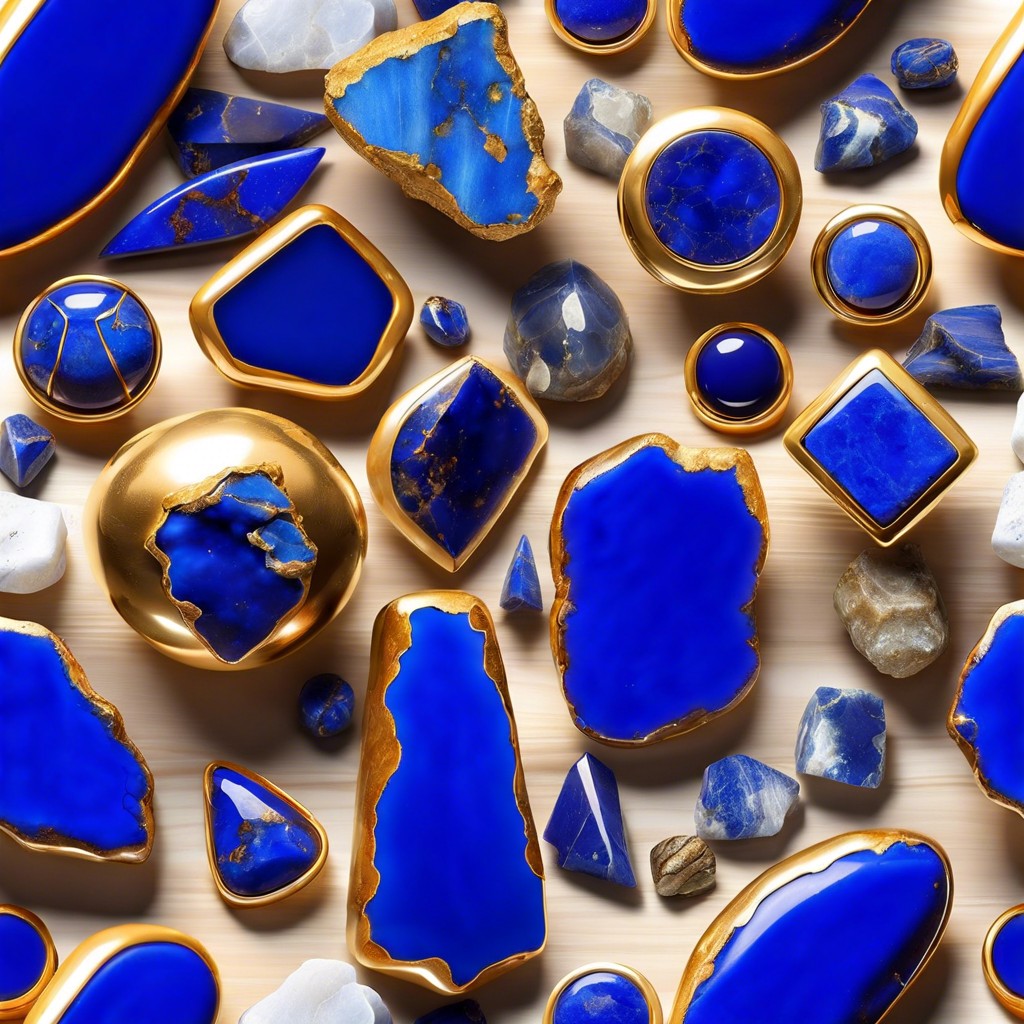Discover the rich spiritual meaning of lapis lazuli, including its symbolism and significance in various cultures.
Lapis lazuli, a gem held in the highest regard by ancient civilizations like Egypt and Sumeria, is more than just a beautiful blue stone. Renowned across cultures—from China to Persia to Europe—for symbolizing divinity, this gem is believed to possess healing properties, promote stress relief, enhance communication, and boost intellect. Dive into its rich symbolism, spiritual insights, and diverse ritual uses, gaining a deeper understanding of why lapis lazuli has captivated the human spirit for millennia.
Key takeaways:
- Lapis lazuli was treasured by ancient civilizations like Egypt and Sumeria.
- Symbolizes divinity in various cultures like China, Persia, and Europe.
- Believed to aid in healing, reducing stress, aiding communication, and boosting intellect.
- Commonly used in rituals for self-awareness, energy healing, protection, and manifestation.
- Represents spiritual insight and deep knowledge across traditions.
Historical Significance

In ancient Egypt, lapis lazuli was more precious than gold. It adorned the burial mask of Tutankhamun, showcasing its esteemed status. The Sumerians believed it housed the spirit of their deities.
In medieval Europe, it was ground into ultramarine, a pigment for vivid blue paints used in iconic artworks. Renaissance artists revered it, linking it to divinity and the heavens.
Chinese emperors saw it as a symbol of power, crafting ornaments to ward off evil. Native American tribes associated it with deep knowledge and sacred vision.
Connection to Ancient Civilizations
In ancient Egypt, lapis lazuli was highly valued and often used in amulets, jewelry, and even in the burial mask of Tutankhamun. Egyptians believed it had protective properties and connected it to the heavens due to its deep blue color.
Mesopotamians also treasured this stone, incorporating it into their religious ceremonies and artwork. They associated lapis lazuli with royalty and the divine, using it in the creation of seals and other sacred objects.
The ancient Greeks and Romans admired its beauty, attributing it with properties of truth and wisdom. They often ground it into powder for use in cosmetics and medicines.
These associations suggest a universal respect for lapis lazuli, seen as more than just a decorative stone but as a bridge to the spiritual and the eternal.
Symbolism in Different Cultures
In Egyptian culture, lapis lazuli was associated with royalty and the gods. It was believed to offer protection and enhance spiritual vision. Pharaohs often had personal adornments and ceremonial objects crafted from it.
In Ancient Persia, the stone symbolized the celestial heavens. They used it in jewelry, amulets, and sacred ornaments, attributing it to divine favor and wisdom.
Buddhist traditions see the stone as a means to enhance spiritual insight and inner peace. Monks use it in meditation to connect with higher consciousness.
In medieval Europe, it was a symbol of the heavens and often used in religious art to denote holiness and divine grace, particularly in depictions of the Virgin Mary.
Healing Attributes
Lapis lazuli is renowned for its purported healing properties. Here are some ways it’s believed to benefit well-being.
It’s often associated with reducing tension and anxiety. When you are feeling stressed, having lapis lazuli nearby may help create a sense of calm.
Some people find that it aids in emotional healing. It can help release repressed emotions, making it easier to process complex feelings.
On the physical side, it’s thought to benefit the throat and vocal cords. This can support clear communication and relieve issues with the throat chakra.
Many also believe lapis lazuli can enhance intellectual ability, boosting concentration and clarity in thought. This makes it popular among students and professionals alike.
Common Uses in Rituals and Practices
In many spiritual practices, lapis lazuli is prized for its ability to enhance self-awareness and clarity. Meditation is a common use, where individuals place the stone on their forehead or hold it in their hands to aid in deepening their state of calm and focus. This practice is believed to align the mind with the higher realms of consciousness.
Additionally, lapis lazuli is often used in Reiki and energy healing sessions. Healers place the stone on specific chakra points, especially the throat or third eye chakras, to facilitate energy flow and unblock stagnation.
Ritualists might employ lapis lazuli in protective amulets or talismans. It’s believed to safeguard the wearer from negative energies and psychic attacks, fostering a sense of inner peace and protection.
Lastly, some use it in manifestation rituals. Writing intentions on a piece of paper and placing it under the stone is thought to amplify the energies of those intentions, helping to bring desired outcomes into reality.





